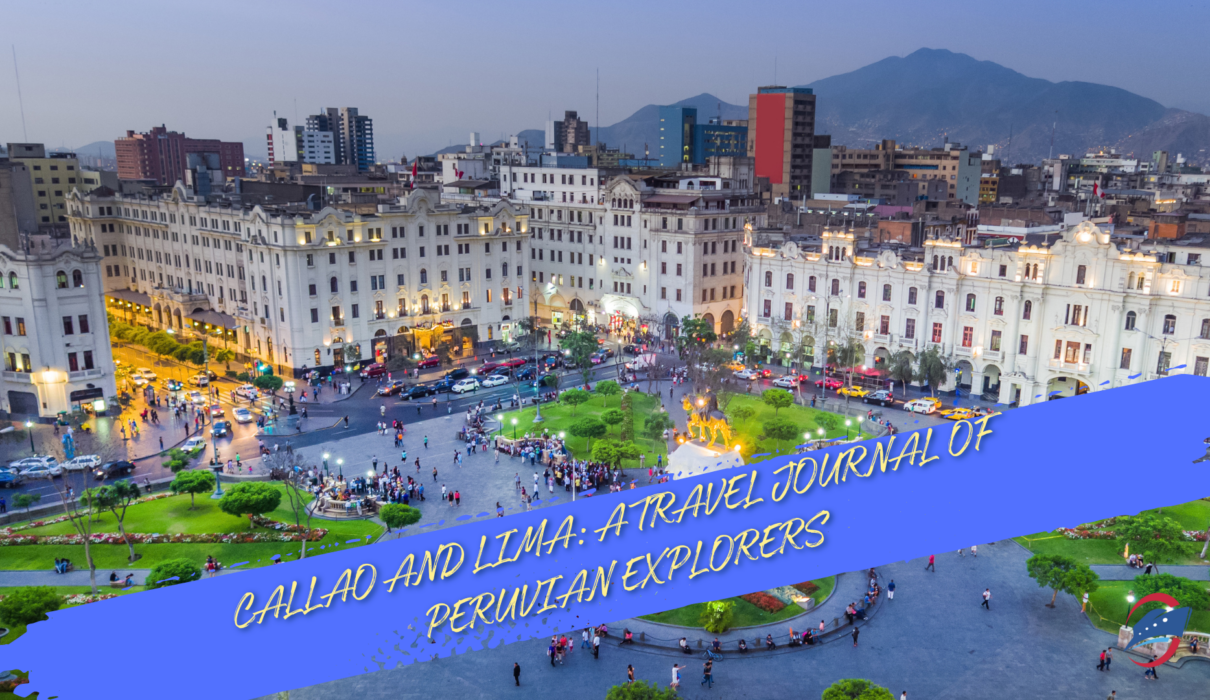The two significant cities of Peru, Lima and its neighboring Callao, the country’s primary port, offer unique experiences for those who wish to explore the historical and cultural treasures of South America. From the deck of the Victoria Residential Ship, you can discover these cities from an entirely different perspective – approaching from the Pacific Ocean at the intersection of history and modernity.

Callao: Treasures of the Port City
Originally inhabited by fishermen and known as „Pitipiti,” Callao was once called „the tip of the mainland” and consisted of huts near the present-day famous Cantolao Beach. Since the 16th century, Callao has been the main port city for Lima and played a crucial role in the Spanish Empire’s trade and naval activities. The renowned Real Felipe Fortress was built to protect the city, and today it serves as a museum. Callao’s port is one of the busiest in Latin America and the main gateway for Peruvian trade with the world.

Real Felipe Fortress: Commissioned by the Spanish in 1747, the construction of this fortress took 29 years to complete. Its purpose was to protect the city of Lima and its most important port from pirate attacks. Years later, it became part of Peru’s defense against the Spanish in the Battle of May 2nd.
Currently, it houses the Peruvian Military Museum. Visitors can view ancient tanks and cannons, explore a gallery with three exhibition rooms, and visit the Governor’s House. You can walk through its labyrinths and traps to reach the lookout, where you’ll find a breathtaking view of the entire port. The fortress is located at Plaza Independencia and is open to visitors every day.
Tip: For a city tour of the Real Felipe Fortress,
Swim with Sea Lions on Palomino Island: Near Callao lies a beautiful group of islands home to a wide variety of marine species typical of the Peruvian coast. Among them, Palomino Island stands out, known for its stories and as a home to sea lions. These magnificent animals are characterized by their impressive size and reddish-brown fur, with males reaching up to 3.5 meters and females up to 2.5 meters in length.

Tip: For swimming with sea lions,
Lima: The City of Kings
Lima, the „City of Kings,” was founded in 1535 by Spanish conqueror Francisco Pizarro and became one of the most important centers of the Spanish colonial empire in South America. The city’s rich colonial heritage is still impressive today and is part of the UNESCO World Heritage list. Lima is one of the world’s largest desert cities and the culinary capital of Peru, known for its vibrant food scene, often considered one of the best in the world. With over 10 million residents, it is also one of the largest cities in Latin America.
The best place to start exploring the city is the Plaza Mayor, the central square of Peru’s capital. The 1651 fountain in the square is the point from which all distances in the country are measured. This square has been the center of government since the city’s founding, supposedly marked by Francisco Pizarro, the Spanish conqueror and founder of Lima, with his sword and blood. The Government Palace, built in 1938, is also located here. The Archbishop’s Palace (Palacio del Arzobispo) with its restored wooden balconies is another architectural gem on the square.

Tip: For a city tour from Callao Port to Lima,
The San Francisco Church and Monastery is a must-see, as it is also a UNESCO World Heritage Site. This monastery complex, featuring catacombs discovered only in 1951, can be visited with a guide. The construction of the entire complex took 30 years and was completed in 1687. The Peruvian Gold Museum (Museo de Oro de Perú) is also a popular destination for tourists, showcasing unique treasures from the pre-Columbian era.

Tip: For a Lima city tour,
Lima is a paradise for food lovers. The famous ceviche (citrus-marinated fish) is a must-try, but don’t miss out on lomo saltado (stir-fried beef) or aji de gallina (spicy chicken stew) either.
Tip: For a Peruvian food tour,
Although Lima and Callao are far from the heart of Inca heritage, Peru’s iconic symbol is undoubtedly Machu Picchu. This mystical mountain city is renowned worldwide and symbolizes the ancient culture of the country. If you’re interested in the Machu Picchu travel blog,
Though Lima and Callao may be distant from the Inca legacy, they are an integral part of Peruvian culture. The country’s rich history, remnants of the Spanish colonial era, and the vibrant modern art and culinary scenes form a unique blend that every traveler should experience. Lima and Callao are perfect places to explore the richness of Peruvian culture and history and to gain insight into the country’s modern face. The exotic flavors, stunning architecture, and the Pacific coastline provide unforgettable experiences that will stay with you for a long time.


